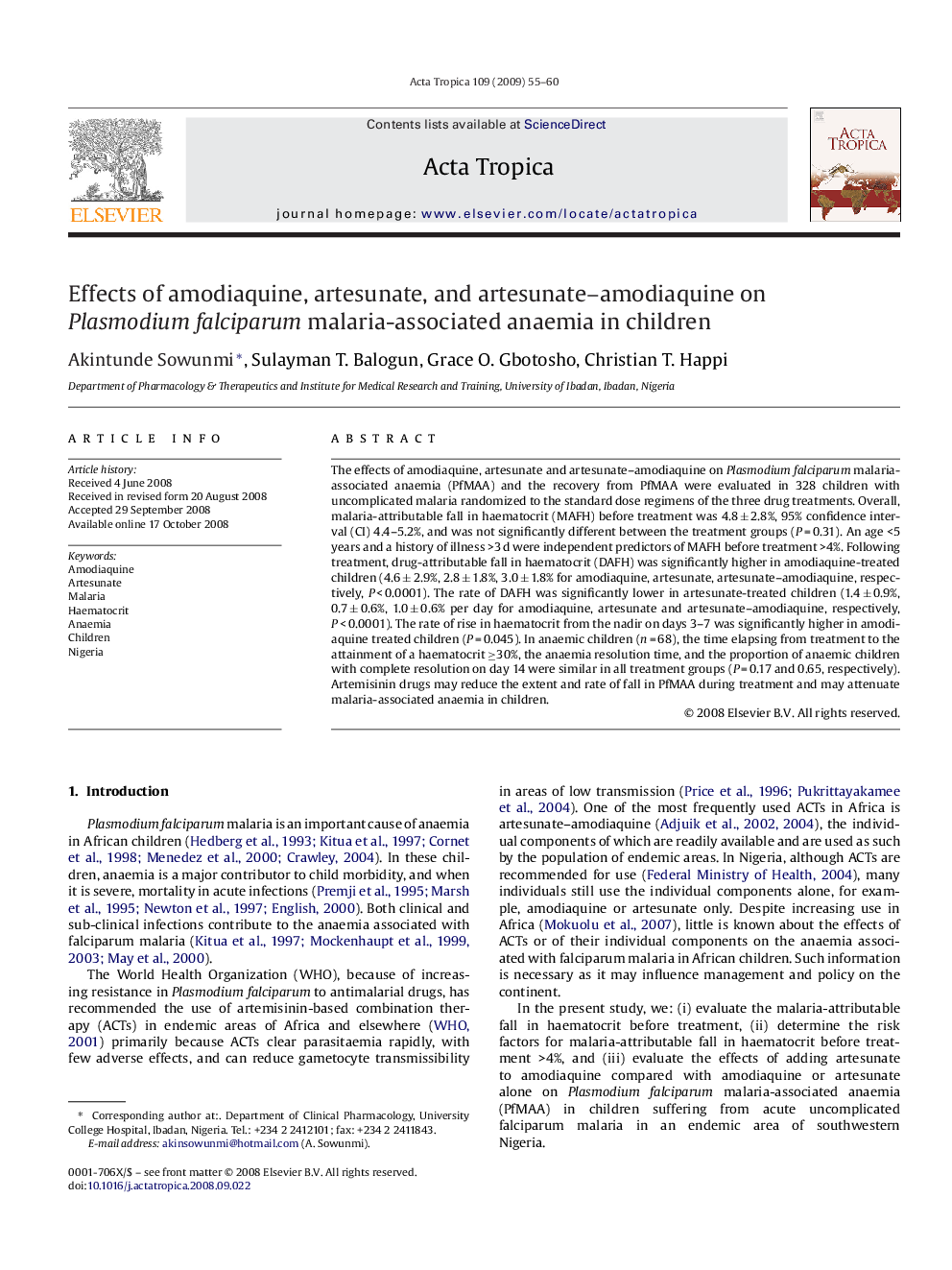| Article ID | Journal | Published Year | Pages | File Type |
|---|---|---|---|---|
| 3394350 | Acta Tropica | 2009 | 6 Pages |
Abstract
The effects of amodiaquine, artesunate and artesunate-amodiaquine on Plasmodium falciparum malaria-associated anaemia (PfMAA) and the recovery from PfMAA were evaluated in 328 children with uncomplicated malaria randomized to the standard dose regimens of the three drug treatments. Overall, malaria-attributable fall in haematocrit (MAFH) before treatment was 4.8 ± 2.8%, 95% confidence interval (CI) 4.4-5.2%, and was not significantly different between the treatment groups (P = 0.31). An age <5 years and a history of illness >3 d were independent predictors of MAFH before treatment >4%. Following treatment, drug-attributable fall in haematocrit (DAFH) was significantly higher in amodiaquine-treated children (4.6 ± 2.9%, 2.8 ± 1.8%, 3.0 ± 1.8% for amodiaquine, artesunate, artesunate-amodiaquine, respectively, P < 0.0001). The rate of DAFH was significantly lower in artesunate-treated children (1.4 ± 0.9%, 0.7 ± 0.6%, 1.0 ± 0.6% per day for amodiaquine, artesunate and artesunate-amodiaquine, respectively, P < 0.0001). The rate of rise in haematocrit from the nadir on days 3-7 was significantly higher in amodiaquine treated children (P = 0.045). In anaemic children (n = 68), the time elapsing from treatment to the attainment of a haematocrit â¥30%, the anaemia resolution time, and the proportion of anaemic children with complete resolution on day 14 were similar in all treatment groups (P = 0.17 and 0.65, respectively). Artemisinin drugs may reduce the extent and rate of fall in PfMAA during treatment and may attenuate malaria-associated anaemia in children.
Related Topics
Life Sciences
Immunology and Microbiology
Parasitology
Authors
Akintunde Sowunmi, Sulayman T. Balogun, Grace O. Gbotosho, Christian T. Happi,
